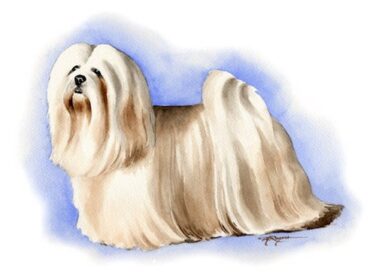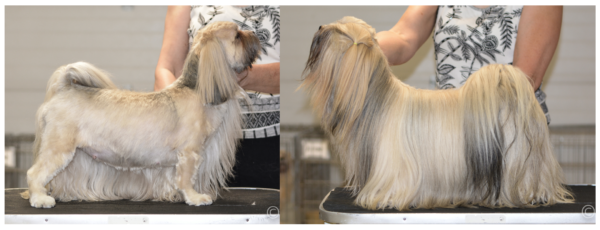
There are any number of terms in the dog world that allude to a dog’s ribs, including “spring of rib” which refers to the degree of curvature of the ribs, and “ribbing,” the narrow, long bones coming out of the dog’s vertebral column that form the chest wall.
Another term is “ribbed up,” though others may refer to the same thing as “ribbed-up well,” and “well ribbed up.” A dog is said to be any of the aforementioned terms when the rib cage and sternum extend well back, the back ribs are long, and the loins are deep and powerful.
These are ribs that are situated well back on the trunk, and they correlate to the length of the dog’s loin or coupling. Length of ribbing is critical for, say, hunting breeds because it relates to chest capacity, and therefore stamina because the articulation of the ribs with the backbone allows them to expand as the dog breathes and pants. This isn’t the same thing as a “well ribbed back” which refers to the physical length of the rib cage from the prosternum to the coupling.

Nor is “ribbed up” peculiar only to hunting breeds. The 1901, 1935, and 2019 Lhasa Apso breed standards call for a dog to be “well ribbed up.”
Meet “Olivia,” the lovely Lhasa Apso lass who appears in the photo above. As her owner, “Nancy” told us, the length of the ribcage on a Lhasa Apso is also necessary to provide adequate oxygenation at the extremely high altitude of Tibet, the breed’s origin. A narrow or short rib cage would be a death sentence for an Apso in their homeland, as would be a too short face and stenotic nares. The photo (which appears with the kind consent of both Nancy and the photographer, Neil Trilokekar) is a fabulous illustration not only of “well ribbed up,” but also of how a long coat can impact one’s impression of a dog. The importance of getting one’s hands on (and under) a coat in a show ring can’t be understated. As aside, Olive delivered three puppies a couple of weeks after the photo was taken, so this also shows a bitch in lovely condition.
But we’ve digressed.
The breed standards of the Smooth Fox Terrier, Pug, Tibetan Terrier, Irish Wolfhound, Welsh Terrier, and Bulldog all also mention “ribbed up.”
To read more about ribs, other ways they’re important, and why show judges feel them, click here.
Image: Lhasa Apso by DJ Rogers – k9artgallery
http://dogprintsgallery.com
www.etsy.com/shop/k9artgallery

The Tibetan Spaniel standard calls for them to be “Well ribbed
with good depth,” same reasoning, to deal with the high altitude of Tibet.
You must not leave the word “well” out of your statement on the lhasa. The standard has for many years called for them to be “well ribbed up” which means the ribs extend well back. To leave the word “well” out could give you any sort of rib cage that would not fit the breed. Please use the correct terms when describing the Lhasa rib cage. It is important as not all breeds describe their ribs as “ well ribbed up” and it is something we can’t lose.
You’re quite right, Bobbie, the word “well” DOES appear before “ribbed up.” We’ll amend the post and thank you for pointing out this important part of the standard!